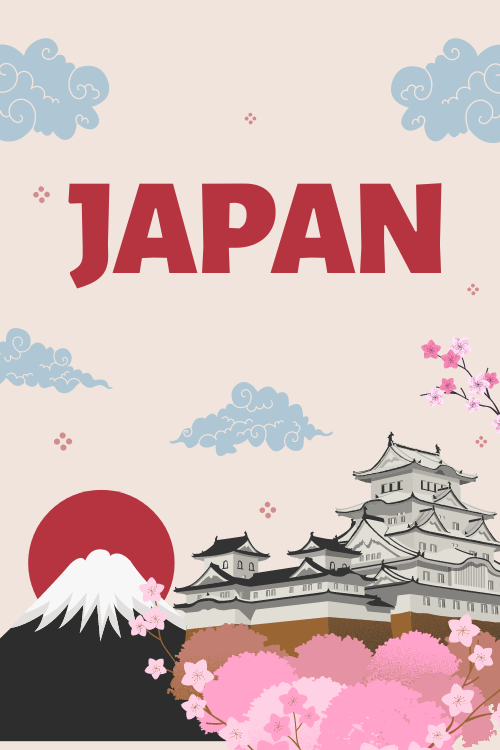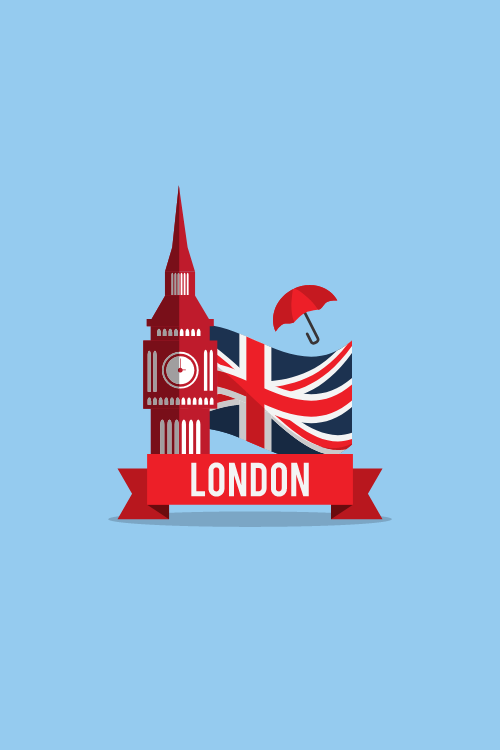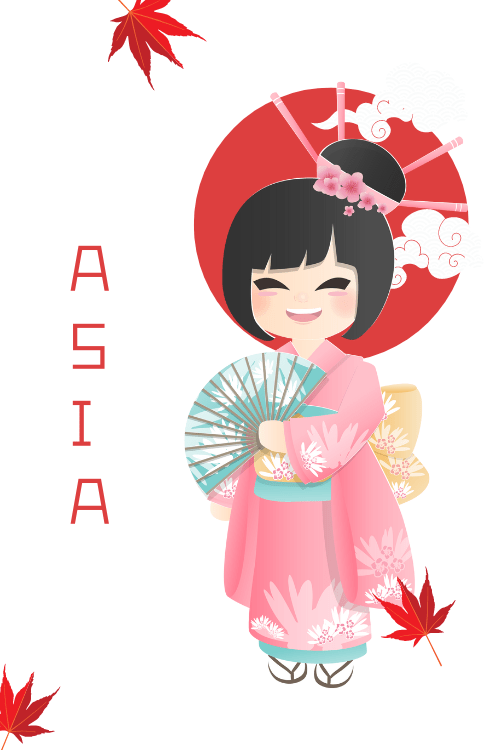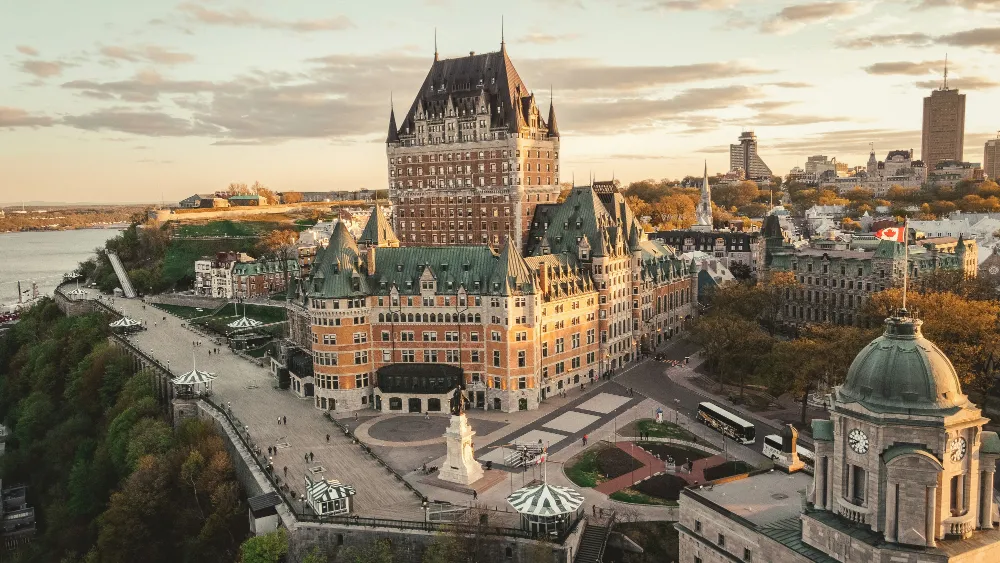Uncategorized
Best Time To Visit Quebec City: Full Guide + Quiz
Quebec City is a gem, sparkling with European charm and centuries of history. You’re likely wondering when the absolute best time is to soak in its magic.
While late summer into early fall often gets the nod for its pleasant weather and vibrant colors, the truth is, the “best” time is really your best time. This guide will walk you through each season. It will help you pinpoint the perfect moment for your unforgettable trip.
Your ideal visit depends on what you want to see, do, and feel in this historic Canadian city.
While late summer into early fall often gets the nod for its pleasant weather and vibrant colors, the truth is, the “best” time is really your best time. This guide will walk you through each season. It will help you pinpoint the perfect moment for your unforgettable trip.
Your ideal visit depends on what you want to see, do, and feel in this historic Canadian city.
Don’t have time to read our guide? Try our quick quiz…
Find Your Perfect Quebec City Trip!
Answer a few questions to discover the best time for your visit to this historic Canadian city.
1. What kind of atmosphere are you looking for in Quebec City?
2. How do you feel about crowds?
3. What’s your ideal weather for exploring Quebec City?
4. Which Quebec City experiences are high on your list?
Select up to 2 that are most important.
5. How important is budget in your planning?
Your Recommended Quebec City Trip Time:
Stay Connected in Canada with esim4.com!

Don’t let roaming charges spoil your Quebec City adventure. Get affordable and convenient eSIM data plans for Canada from esim4.com. Easy to set up, stay connected from the moment you land!
Explore Canada eSIM PlansYour Quick Guide: Quebec City’s Best Times at a Glance
Sometimes you just need the highlights, right? Before we dive deep, here’s a quick look at what Quebec City offers throughout the year.
This little cheat sheet can help you quickly see which season might call to you.
Quebec City Travel Cheat Sheet
| Best For | Recommended Months/Season | Why It’s Great & What to Know |
| Overall Amazing Trip | Late Sept – Early Oct | Lovely weather, stunning fall leaves, fewer people than summer, and most things are open. |
| Saving Some Money | Nov / Late Mar – Apr | You’ll find the lowest prices for places to stay and flights. Just be ready for some places to be closed and weather that can change quickly. |
| Catching Big Festivals | Jun – Aug / Jan – Feb | Summer brings the awesome Festival d’Eté de Québec. Winter is famous for the Québec Winter Carnival. |
| Seeing Beautiful Fall Colors | Late Sept – Early Oct | It’s a paradise for leaf-watchers with bright reds and golds. The crisp air is perfect for taking it all in. |
| Experiencing Winter Magic | Dec – Feb | Picture Old Québec covered in snow, Christmas markets in December, the Winter Carnival in February, and cool things like the Ice Hotel. |
| Avoiding Big Crowds | Oct, Mar, May / Nov, Apr | The shoulder months (Oct, May) and off-season (Nov, Apr, Mar) mean a quieter visit. April, May, and June are also good bets. |
| A Romantic Escape | Sept – Oct / Dec | Fall has a cozy feel with lovely evenings. December is magical with festive lights and Christmas markets. |
| Fun with the Family | Jun – Aug / Late May | Warm weather means lots of outdoor fun and festivals in summer. Late spring offers milder days. |
| Adventures for Food Lovers | Sept (Harvest) / Apr (Maple) | Fall is great for fresh local food and farm visits. Spring is when you can try traditional sugar shack treats. |
This table gives you a starting point. Now, let’s explore each season in more detail so you can find your perfect Quebec City adventure.
This “Invisible” SIM Card is Saving Ordinary Travellers Hundreds on International Trips
You see those travelers glide through airport arrivals – calm, internet connected, already booking their ride-share while others are frantically searching for Wi-Fi or queuing at chaotic phone kiosks…
What’s their secret?
When you travel overseas you’re either paying insanely high data-roaming fees from your home carrier or frantically hunting down some local SIM card kiosk the second you land, wasting precious vacation time just trying to get your phone working.
One leaves you with a bill that leaves a sour taste in your mouth after a great trip. The other eats into your actual holiday, causing stress and hassle when you should be exploring.
But what if I told you that ordinary travelers just like you have figured out a way to completely bypass this frustrating experience?
They’re using something most travelers don’t even know exists… a kind of “invisible” SIM card technology that you likely already have on your phone right now.
And it’s allowing them to tap into super-cheap, high-speed data anywhere in the world… without swapping cards, without visiting a store, and without getting ripped off.
It’s called an eSIM.
And eSIM4.com makes getting one simple.
Here’s how it works:
- Step 1: Go to eSIM4.com.
- Step 2: You pick your destination, choose a data plan.
- Step 3: We send you a simple QR code. You scan it with your phone’s camera.
Your new travel SIM is installed in under 3 minutes!
The moment your plane’s wheels hit the tarmac overseas? Your phone instantly connects to a fast, local network.
No queues. No fumbling with tiny plastic chips. No nasty bill shock.
Just seamless, affordable data letting you use Google Maps, WhatsApp, Uber, Instagram… whatever you need… right away.
This is how travel is supposed to work. And it’s saving people like you hundreds of dollars on a single trip.
Stop letting the big phone companies treat your travel budget like their personal ATM. Stop wasting your valuable vacation time being disconnected or stressed.
Join the smart travelers who’ve already made the switch.
CLICK HERE TO GET STARTEDGet to Know Quebec City’s Seasons: A Closer Look
Quebec City truly has four very different seasons. Each one changes the city’s look, its vibe, and what you can do there.
Let’s dive into what makes each season special. This will help you choose the best fit for your travel dreams.
Summer (June – August): Enjoy Vibrant Festivals & Warm Adventures
Summer in Quebec City is full of life! Think warm sunshine and a packed schedule of outdoor fun.
What’s the Summer Weather Like?
You can expect warm and sunny days. It often gets quite humid too. Temperatures usually hover between 15°C and 25°C (that’s 59°F to 77°F).
July is the hottest month, with average temperatures around 19.8°C (67.7°F). You’ll get about 7.5 to 8 hours of sunshine each day.
But, that humidity can also bring some quick summer showers. August days are nice and long, giving you over 14 hours of daylight to explore. Keep in mind the “humidex,” which can make it feel warmer than the thermometer says.
Why You’ll Love Summer:
Those long daylight hours are perfect for seeing and doing as much as possible. Summer is the time for all sorts of outdoor fun.
You can take easy strolls or eat outside on charming patios. The city buzzes with festivals.
The Festival d’Eté de Québec in July is a huge draw for music fans. It’s a season for “celebrations and festivals, swimming in the lakes, enjoying the lively patios”. Plus, almost all tourist spots are open, often for longer hours.
What to Keep in Mind for Summer:
Summer is when most tourists visit. This means more people at popular spots.
You might also see higher prices for hotels and flights. The high humidity can feel a bit sticky for some folks.
Mosquitoes can also be around, especially near water or in wooded areas. They usually calm down from mid-July through August, though.
Top Things to See and Do in Summer:
Wander through the historic cobblestone streets of Old Quebec. It’s a UNESCO World Heritage site and truly special.
Feel the energy of the big summer festivals. Enjoy a scenic boat tour on the beautiful St. Lawrence River.
Visit the historic Plains of Abraham for some recreation and history. Or, just relax and watch the world go by from one of the city’s many outdoor patios (they call them terrasses).
What to Pack for Summer Fun:
Pack light, breathable clothes. A light rain jacket or an umbrella will be handy for those surprise showers.
Don’t forget sunscreen, a hat, and sunglasses for sunny days. Insect repellent is a good idea, especially if you plan to be in parks or near water.
Most importantly, bring comfortable walking shoes. You’ll need them for the city’s charming but sometimes uneven streets.
Summer offers that classic, lively tourist experience. To make the most of it, try booking your stays and popular tours ahead of time. Visiting popular spots early in the morning or later in the afternoon can also mean fewer crowds.
Fall (September – October): Experience Spectacular Foliage & Crisp Air
Many say autumn is a magical time in Quebec City. It’s known for stunning natural beauty and fresh, comfortable air.
What’s the Fall Weather Like?
The shift from summer to fall brings wonderfully mild temperatures. It’s perfect for walking and exploring.
The days are still quite long, especially in early September. September is also a great month to taste local foods as the harvest season kicks off.
Average fall temperatures are usually between 5°C and 15°C (41°F to 59°F). The famous fall leaves typically look their best in late September and early October.
By then, daily average temperatures start to dip, settling around 7.3°C (45.2°F). You can expect “cool, crisp air with colourful foliage and light rain”.
Why You’ll Love Fall:
Quebec City in the fall is often called a “leaf-peeper’s paradise”. The city and the nearby countryside burst into amazing shades of red, orange, and gold. It’s a truly spectacular sight.
Many travelers and locals think this is the “best overall” time to visit. The harvest season is in full swing.
This means you can go apple picking at local orchards and enjoy fresh, seasonal foods. It’s a great time for “agrotourism and U-pick activities”.
Compared to the busy summer months, fall has noticeably fewer crowds. This makes for a more relaxed visit.
The pleasant, crisp air is ideal for spending lots of time outdoors. Photographers will love the “golden light” that bathes the city this season.
It’s a season that truly feels alive with color and flavor.
What to Keep in Mind for Fall:
Temperatures can drop quite a bit, especially by late October. You’ll need warmer clothes then.
Some seasonal spots or outdoor activities might start to shorten their hours or close down towards the end of October. There’s also a chance of rainy days.
Top Things to See and Do in Fall:
Take scenic drives along the St. Lawrence River. The panoramic fall colors are breathtaking.
Explore hiking trails in nearby mountains, like those in Jacques Cartier National Park. They are especially beautiful this time of year.
Think about a fall foliage cruise for a different view of the vibrant landscape. Visit local orchards for apple picking and other harvest fun.
Simply walking through Old Quebec as it’s decorated in autumn colors is an experience you won’t forget.
What to Pack for Fall Comfort:
Layering your clothes is the key to comfort in the fall. Pack a mix of sweaters, light jackets, and a waterproof outer layer.
Comfortable walking shoes are still a must for exploring the city and any outdoor trips you plan.
Fall in Quebec City is a very attractive option for many travelers. It offers a fantastic mix of stunning natural beauty, comfortable sightseeing weather, and a more relaxed vibe due to fewer crowds.
This balance makes it a top choice if you prioritize comfortable exploring and beautiful sights. For the best weather and to ensure most attractions are open, “early fall” (September to mid-October) is usually better than “late fall” (late October into November).
November is often seen as a low-season month with less predictable weather.
Winter (November – March): Discover A Magical Snowy Wonderland
Winter turns Quebec City into an enchanting scene of beauty. But, it does demand respect for its often very cold weather.
What’s the Winter Weather Like?
Winters in Quebec City are described as “bitterly cold, but in a good way,” if you’re dressed right for it. The city usually gets a lot of snow.
An average winter sees about 10 feet (three meters) pile up. January is the coldest month.
Average temperatures can drop to a chilly -11.1°C (12°F). December has the fewest daylight hours.
This impacts how much time you have for outdoor activities. The “windchill factor” is a big deal.
It can make the air feel much colder than the actual temperature. So, warm, protective clothing is super important.
Even with the cold, Quebec gets many hours of sunshine during the winter. Snow usually falls from November through April.
Why You’ll Love Winter:
The city looks truly magical when it’s covered in snow. Old Quebec, the historic district, is especially charming.
It’s a time of “fluffy white snow and pure magic”. A major highlight is the Québec Winter Carnival.
It’s usually held in early February and is known as one of the world’s best winter events. The time leading up to Christmas in December is also special.
You’ll find charming Christmas markets, and the city sparkles with festive lights. Winter offers lots of chances for cold-weather sports.
Think skiing, snowshoeing, and ice skating. If you want to escape the cold, there are plenty of cozy indoor things to do, from visiting museums to relaxing at Nordic spas.
What to Keep in Mind for Winter:
The extreme cold is a main thing to think about. You’ll need special winter clothes and careful preparation to stay comfortable and safe.
Walking can get slippery because of ice and snow. You’ll need to walk carefully and wear good footwear.
The shorter daylight hours, especially in December and January, mean less time for outdoor exploring. Some outdoor attractions or those that need warmer weather might be closed or hard to get to in winter.
Top Things to See and Do in Winter:
Experience the unique fun and lively vibe of the Québec Winter Carnival. Visit the amazing Hôtel de Glace (Ice Hotel).
It’s a remarkable building made new each year from ice and snow. If you’re there in December, explore the traditional Christmas markets.
Try popular winter sports like snowshoeing or cross-country skiing in the city’s parks or nearby trails. Most of all, enjoy the unmatched charm of Old Quebec transformed into a snowy wonderland.
What to Pack for Winter Warmth:
Proper winter clothes are a must. This includes thermal underwear, an insulated and windproof winter coat, and waterproof winter boots with good grip.
You’ll also need hats that cover your ears, warm gloves or mittens, and scarves. Layering is key for adjusting to different conditions and indoor heating.
A winter trip to Quebec City is often about a specific event or experience, not just a casual visit. The serious cold and need for special gear mean that people choosing this season are usually coming for its unique snowy charm, the famous Winter Carnival, or the festive holiday feel.
It’s a destination that, if you’re prepared, offers amazing magic and memories. The key is to know what to expect with the cold and to jump into the unique winter experiences that make Quebec City so special for the right kind of traveler.
Spring (April – May): Witness Awakening Nature & Sweet Traditions
Spring in Quebec City is a time of change. It marks the city’s slow wake-up from winter’s chill into a season of new life.
What’s the Spring Weather Like?
As a season of transition, spring sees the snow gradually melt. The days also get noticeably longer.
Early in the season, from March into April, temperatures can range from 0°C to 10°C (32°F to 50°F). By May, the weather usually warms up quite a bit.
Daily average temperatures can reach around 12.1°C (53.9°F). However, the early part of spring, especially March and April, can bring an “unpredictable mix of rain, slush, and sun”.
The spring season itself can sometimes feel short. You might see sudden changes in temperature.
Why You’ll Love Spring:
One of the most unique cultural things about spring is the maple syrup season. “Sugaring-off parties” at traditional sugar shacks (cabanes à sucre) are a much-loved tradition.
April is usually the best time for these sweet celebrations. As the season goes on, blooming flowers and lush green landscapes start to appear, bringing fresh color to the city.
Compared to the busy summer months, spring, especially early spring, has fewer tourists. This means a quieter visit.
This can also mean good hotel deals before summer prices start. Late May, in particular, is often called a “shoulder season sweet spot.” It offers milder weather and many sites and attractions reopen.
What to Keep in Mind for Spring:
Early spring, specifically from late March through mid-April, can be tricky for visitors. This time is often called “mud season.”
Melting snow creates mud and slush. Some attractions might stay closed or be hard to get to.
In fact, some guides suggest avoiding late March to mid-April for general tourism. The weather throughout spring can be unpredictable.
There’s a higher chance of rainy days. Some attractions might still have limited hours or stay closed in the earlier part of the spring.
Top Things to See and Do in Spring:
A visit to a traditional sugar shack (cabane à sucre) for a maple-themed meal and to see syrup being made is a classic Quebec spring experience. If you’re visiting in early spring, spring skiing might still be an option in nearby areas.
As the weather gets better, explore historic sites. They usually reopen with longer hours as May gets closer.
Enjoy the city’s parks, like Jacques Cartier National Park, as they start to get green and come alive with spring flowers. Relaxing at a Nordic Spa can also be a nice activity during the milder days of spring.
What to Pack for Spring Surprises:
Versatile layers are key for handling spring’s changing temperatures. A waterproof jacket and waterproof shoes are highly recommended.
You’ll likely see rain and possibly muddy conditions, especially in early spring. An umbrella will also be useful.
Because the weather can vary so much, packing “four-season clothing” items is smart advice.
Spring in Quebec City can feel like two different periods. Early spring (March and much of April) can be challenging for general tourism due to unpredictable weather, slush, and some closures.
On the other hand, late spring, especially May, becomes a promising and often lovely time to visit. The best of spring is usually found in May.
It offers milder temperatures, blooming landscapes, and the reopening of seasonal attractions, all with fewer crowds than summer. So, while a general recommendation for “spring” needs some explaining, guiding you towards late April and May will likely lead to a better trip.
However, the unique cultural draw of the sugar shack season, which often peaks in March and April, is still a strong reason for some to visit earlier in spring, as long as they are ready for the conditions.
So, What’s THE Best Time for Your Quebec City Visit?
Ultimately, the “best” time to visit Quebec City is up to you. It’s tied to your travel preferences, what’s important to you, and the kind of trip you’re looking for.
However, if we look at a balance of factors like pleasant weather, not too many crowds, full access to attractions, and the city’s overall beauty and energy, late September to early October often comes out on top for a first-time or general visitor. This matches what many say about this period having ideal temperatures, amazing fall leaves, and fewer crowds than peak summer.
Why this time? It’s that amazing mix of beautiful fall foliage turning the city into a picture-perfect scene, comfortable temperatures great for lots of walking and exploring, a noticeable drop in tourist numbers after the summer rush, and most attractions and tours still fully open.
But, it’s really important to know there are other great times that might suit different travelers better:
- Late May: This is excellent if you want milder weather with fewer crowds than the summer months that follow. You can often find good value for hotels and activities then.
- Summer (June-August): If your main goal is to experience the big festival season, enjoy the warmest weather for outdoor fun, and you don’t mind crowds or higher prices, then summer is perfect.
- Winter (especially for Carnival/Christmas markets): If you’re looking for a unique, magical winter experience, with snow-covered views and famous events, and you’re ready for cold temperatures, winter offers an unforgettable visit.
Think of this as a well-supported starting point. Its real value comes when you use this general advice and then move to the next section, “Making Your Trip Your Own.”
This helps you see if the general recommendation fits your specific needs or if another time might actually be better for your travel style and goals. This way, we acknowledge the general wisdom while stressing that your personal preference is key in making the final choice.
Making Your Trip Your Own: Best Times for Different Travelers
Everyone travels differently. This section looks at the best times to visit Quebec City based on your specific interests and travel style.
This way, you get advice that’s truly useful for you.
Your First Quebec City Adventure
- Our Pick: Late spring (May) or early fall (September-early October).
- Why it Works: These times offer a great balance. You get pleasant weather for lots of sightseeing. Most attractions are fully open. Crowd levels are manageable. Plus, you get the bonus of seasonal beauty – either spring flowers or vibrant fall leaves. This makes for a wonderful, comfortable, and visually rich first taste of the city.
Traveling on a Budget
- Our Pick: The shoulder and low seasons. Specifically, late March or early November are usually the most wallet-friendly. April and November are known as low season months when prices tend to be lower.
- Why it Works: Hotel and flight prices are typically at their lowest during these off-peak times.
- Good to Know: Be ready for unpredictable weather. Think slush and mud in March/April, or cold and somewhat grey days in November. Also, some attractions might have limited hours or be closed. While you save money, there might be trade-offs in what you can experience.
For the Festival Fans
- Our Pick: Summer (June-August) is the main time for big events like the Festival d’Eté de Québec. For a classic winter celebration, January-February is when the world-famous Québec Winter Carnival happens.
- Why it Works: These are the peak seasons for Quebec City’s largest and most well-known festivals. They offer lively atmospheres and unique cultural fun.
Capturing Perfect Photos
- Our Pick: Fall (late September-early October) is highly recommended. You’ll find “golden trees and soft, low light,” which is a photographer’s dream. Winter offers magical snow-covered scenes, the amazing Ice Hotel, and the festive glow of holiday lights. If you want long daylight hours and chances for evening shots, late June can be great.
- Why it Works: These seasons give you the most dramatic, visually unique, and atmospheric chances to take stunning pictures of the city.
For the Food Explorers
- Our Pick: Fall, especially September, is excellent for the harvest season. There’s lots of local produce and chances for apple picking. Spring, particularly April, is all about maple syrup season and traditional sugar shack (cabane à sucre) experiences. Summer offers lovely outdoor dining and access to fresh market foods.
- Why it Works: Traveling during these peak seasons lets you dive into Quebec’s signature food traditions and enjoy the freshest ingredients.
Immersing in Culture
- Our Pick: Fall is often suggested as an ideal time. “Everything’s open, the city feels alive, and you won’t be fighting crowds to get into galleries or guided tours”. While museums and historic sites are open year-round, the shoulder seasons (late spring and fall) offer a good mix of comfortable exploring weather and fewer people. This allows for a more engaging cultural experience.
- Why it Works: Smaller crowds during these times can lead to a more personal and deep experience with the city’s rich culture.
Traveling Solo
- Our Pick: Fall is particularly good for solo travelers. It offers a balance of “cooler weather, smaller crowds, and plenty of space to explore at your own pace”. Late May is noted as a close second, offering similar benefits.
- Why it Works: These periods provide a comfortable, safe, and less crowded environment for exploring on your own.
Fun for the Whole Family
- Our Pick: Summer has the widest range of outdoor activities, numerous festivals, and generally ensures all family-friendly attractions are open and easy to get to. Late spring (May), once the weather gets milder and more attractions are fully open, is also a good choice.
- Why it Works: These times give you the most options for kid-friendly activities and offer generally pleasant weather for family outings. Thinking about shoulder seasons can help balance the desire for activities with wanting fewer crowds.
Escaping the Crowds
- Our Pick: The shoulder seasons—specifically October, March, and May, with late May and early October often highlighted as top choices—are excellent for avoiding the biggest crowds. The low seasons of November and April will have the fewest visitors. Some also suggest April, May, or June as alternatives to the peak summer months of July through September.
- Why it Works: These times see far fewer tourists. This allows for a more relaxed and spacious visit. However, remember that visiting during the low season might mean compromises on weather and whether some attractions are open.
By looking at different types of travelers and matching their needs with what each season offers, this section aims to give you very practical and personal advice. It helps answer that common question: “What’s the best time for me to visit Quebec City?”
Knowing Quebec City’s Tourist Seasons
Understanding how tourist numbers, prices, and the general vibe change throughout the year is key for planning your trip. Quebec City, like many popular spots, has clear high, shoulder, and low tourist seasons.
High Season: When the City Buzzes
- When is it? The main high season is summer, from June through September. Another big peak happens in January and February. This is mostly because of the world-famous Québec Winter Carnival. December also sees more visitors, drawn by the charming Christmas markets and festive feel. The period from late June to early September is generally seen as the high tourist season.
- What Can You Expect? This is the busiest time in Quebec City. Expect larger crowds at all major attractions. You’ll also see the highest prices for hotels and flights. The atmosphere is very lively and bustling. On the bright side, all attractions are usually open, often with longer hours, and the city is full of events. Booking your stay and popular tours well in advance is a must during high season.
Shoulder Seasons: Finding the Sweet Spot
- When is it? The shoulder seasons usually fall in October, March, and May. More specifically, late May and the time from late September to early October are often pointed out as prime shoulder periods. They offer an excellent balance of conditions.
- What are the Perks? Visiting during a shoulder season typically means fewer crowds compared to the high season. The weather can be very pleasant, especially in late spring (May) and early fall (September/October). You often have a better chance of finding good deals on places to stay. Shoulder seasons frequently offer a great mix of open attractions, comfortable exploring weather, and a more relaxed vibe.
Low Season: Quiet Times and Good Deals
- When is it? November and April are generally thought of as the low season months in Quebec City. The period from late March through early April, when the spring thaw happens, also fits into this category due to less predictable weather.
- What Should You Consider? The main pluses of visiting during the low season are the lowest prices for travel and hotels, and the fewest other tourists. However, these benefits come with important things to think about. The weather can be unpredictable or even unpleasant—cold and a bit gloomy in November, or marked by slush and mud in April. Also, some attractions, restaurants, or tours might be closed for the season or have much shorter hours.
Here’s a quick overview to make it clearer:
Quebec City Tourist Seasons Overview
| Season Type | Typical Months | Crowd Levels | Price Indication | Key Vibe & What’s Happening |
| High | Jun–Sep; Jan–Feb; Dec | High | Premium | Festive & bustling; all attractions open |
| Shoulder | May; Oct; Mar (late) | Moderate | Moderate | Pleasant & balanced; good value |
| Low | Nov; Apr; Mar (early) | Low | Budget-Friendly | Quiet & unpredictable; some closures |
Knowing about these tourist seasons is a really important part of planning your trip. It directly affects your budget, what to expect crowd-wise, and your overall experience.
The “shoulder season,” in particular, often gives many travelers a strategic advantage. While high season has clear benefits like events and weather, it also brings crowds and higher prices.
Low season offers price advantages but can mean big compromises on your experience due to weather and closures. The shoulder seasons often offer a tempting middle ground.
It’s a compromise that maximizes good things like pleasant weather and open attractions while minimizing downsides like peak crowds and costs. This makes shoulder season travel a great option if your priorities match this balance.
Of course, there are still good reasons someone might choose to visit during high or low seasons.
Times You Might Want to Reconsider (Or Be Extra Prepared For)
While Quebec City has charm all year, a good guide should also talk about times that might be less ideal for a general visit. Or, at least, times that need special preparation and realistic expectations.
Being honest about these less perfect times helps you avoid a potentially disappointing trip.
- Late March to Mid-April: This period is often mentioned as possibly the “worst time” for general tourism. The main reason is the spring thaw. This often means “mud, slush, and closures”. The melting snow can make walking outdoors unpleasant. Paths can be messy. Some attractions, especially those that rely on stable ground or outdoor conditions, might be temporarily closed or just less enjoyable.
- November: This month is right in the low season. It can feel a bit bleak for visitors. As one source describes, “winter is setting in, the trees have mainly shed their leaves, and the Christmas festivities are yet to begin”. The weather can be cold, damp, and grey. You won’t have the beauty of fall colors or the magical blanket of winter snow that comes later.
It’s important to understand why these times are challenging, not just to tell you to avoid them. For late March to mid-April, the issue is mainly that messy change from winter to spring.
For November, it’s often that dreary time between the energy of fall and the festive start of winter.
If there are very specific reasons you might still choose to visit then – maybe you’re on a very tight budget and plan mostly indoor activities in November, or you have an unavoidable travel window – those can be noted. But, the general caution for most tourists during these specific weeks should still be clear.
This approach makes the overall advice more trustworthy. It’s not just about promoting Quebec City; it’s about offering real, practical advice so you have the best possible trip.
Your Essential Quebec City Trip Planning Checklist
Once you’ve decided on the timing of your visit, a few practical things come into play. These tips are here to make your trip planning smoother and your visit even more enjoyable.
How Long Should Your Quebec City Stay Be?
For a great experience that covers the main sights within Quebec City itself, planning for 3 to 4 days is usually a good idea. This gives you enough time to explore Old Quebec, visit key museums and attractions, and really soak in the city’s unique vibe at a comfortable pace.
Some sources suggest “4-7 days is a good amount of time to explore Quebec”. That might include exploring the wider region.
For a visit focused mainly on Quebec City, the shorter end of this range is often just right. If you’re planning day trips to nearby areas or want a more relaxed pace with plenty of time for just chilling out and spontaneous discoveries, then staying longer would be great.
What to Pack: The Must-Haves and Seasonal Extras
- General Must-Haves: No matter when you visit, comfortable walking shoes are absolutely key. The charming cobblestone streets of Old Quebec can be uneven and really need sturdy footwear. Packing clothes that you can layer is always a smart move, as weather conditions can change. If you’re visiting from another country, a universal power adapter will be needed for charging your devices.
- Seasonal Reminders: It’s good to quickly go over key packing needs for your chosen season. For winter, this means full warm gear including thermals, an insulated outerwear, hats, gloves, and waterproof boots. For spring and summer, rain gear like a light waterproof jacket or an umbrella is a good idea for occasional showers. Sunscreen is important for sunny days all year, but especially in summer.
Getting Around and Seeing the Sights
Old Quebec, where many of the main attractions are, is very walkable. Its small size and pedestrian-friendly streets make exploring on foot the best way to experience its historic charm.
For places outside the old town, or for covering longer distances, Quebec City has a reliable public transportation system (RTC). Taxis and rideshare services are also easy to find.
Why Booking Ahead is a Smart Move
Booking your accommodation and any tours you want to do well in advance is strongly recommended. This is especially true if you’re traveling during the high season (summer months, the time of the Winter Carnival, and around Christmas).
During these peak times, demand is high, and the places you want can sell out quickly. Even during the shoulder seasons, booking ahead is a good idea to get the best choices and possibly better rates.
These practical tips turn general information into truly helpful and actionable advice. By covering these logistical points, the goal is to make your trip planning journey better and ensure you’re well-prepared for your Quebec City adventure.
Your Quebec City Questions Answered (FAQs)
Here are answers to some common questions travelers often have when planning a trip to Quebec City. These are based on the detailed information we’ve covered.
- What’s the very best month to visit Quebec City? While “best” is personal, July is often mentioned if you want warm weather and the peak festival season. However, for an overall balance of pleasant weather, beautiful scenery (like fall leaves), and manageable crowds, late September or early October is frequently recommended.
- When is the main tourist season in Quebec? The main tourist season generally runs from May to October. There are big peaks within this time, especially during the summer months (June-August), and also for specific events like the Winter Carnival in January/February.
- How many days do I really need in Quebec City? Generally, 3 to 4 days are enough to explore the main highlights of Quebec City itself. If you’re including day trips or like a slower pace, you could consider 4 to 7 days.
- Is Quebec City actually worth visiting? Absolutely, yes! Quebec City offers a unique mix of European charm, rich North American history, lively French-Canadian culture, and stunning landscapes. This makes it a worthwhile destination for many different kinds of travelers.
- When is the rainy season there? Quebec City doesn’t have a distinct “rainy season.” Rain can happen throughout the year. Summer months can have showers due to humidity, and spring can also bring rainy periods.
- When is Quebec City the most crowded? The city sees its highest crowd levels during the summer, particularly in July and August. It’s also very busy during the Québec Winter Carnival in January/February.
- Is winter a good time to visit Quebec City? Yes, winter can be a wonderful time to visit if you’re looking for that specific magical snow-covered experience, the excitement of the Winter Carnival, or festive Christmas markets. You just need to be well-prepared for cold temperatures.
- What’s the cheapest time to visit Quebec City? The low season months of November and late March/April typically offer the lowest prices for accommodation and travel.
- When do cruise ships usually arrive in Quebec City? Cruise ships mainly visit Quebec City from late spring through fall. The peak time for cruise ship arrivals is often in September and October. This lines up with the popular fall foliage season. This is something to keep in mind regarding crowd levels in Old Quebec during those months.
An FAQ section like this helps answer any questions you might still have. It can also help people find answers to a wider range of specific search queries, making the information even more useful.
Ready to Plan Your Perfect Quebec City Getaway?
Quebec City’s charm is hard to miss. It offers a unique and memorable experience no matter when you decide to visit.
As this guide has shown, the “best” time truly depends on what you like, what’s important to you, and the kind of adventure you’re hoping for. For many, that sweet spot of beautiful scenery, comfortable weather, and manageable crowds found in early fall (late September to early October) or the fresh renewal of late spring (May) is ideal.
However, the lively energy of summer festivals, the magical snowy landscapes of winter, and the budget-friendly quiet of the low seasons each have their own special appeal.
The information here is meant to help you confidently choose your ideal time to explore the historic streets, rich culture, and captivating atmosphere of Quebec City. With a better understanding of the seasonal changes, weather patterns, and different crowd levels, your next step is to turn this knowledge into a real plan.
Think about looking into flights and hotels that fit with your chosen season. If you’re interested in specific events or tours, especially during peak times, booking in advance is a very good idea.
You can make your travel plan even richer by looking into more specific guides on “Things to Do in Quebec City,” “Where to Stay in Quebec City,” or “Quebec City Itineraries.” These can give you even more tailored information for an unforgettable journey.






